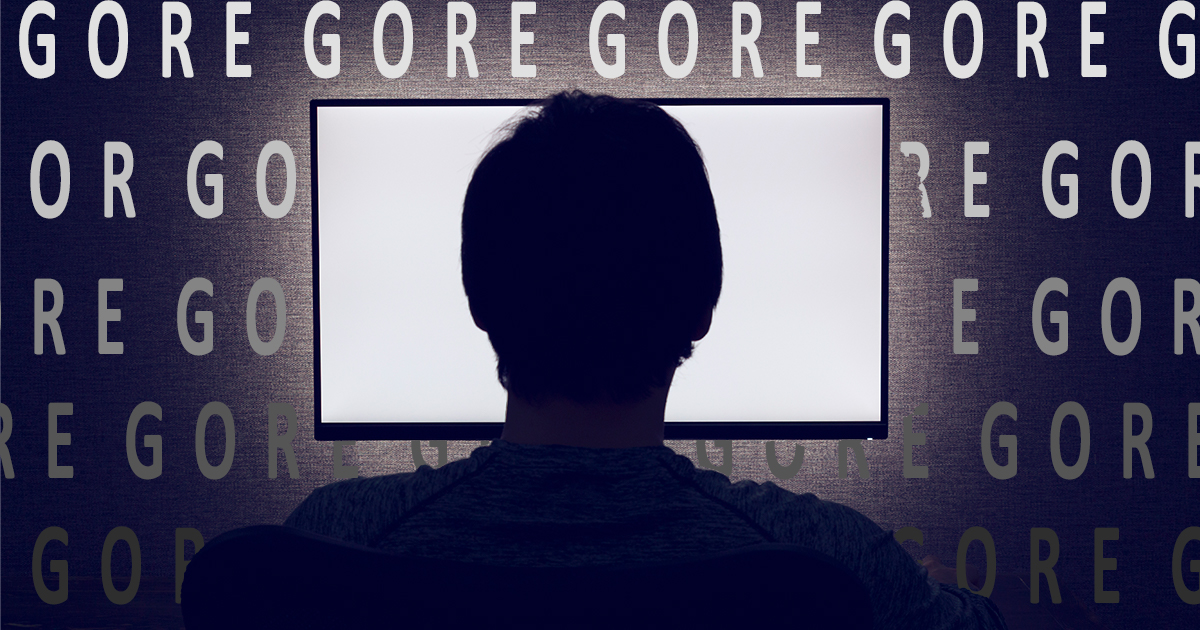Video gore has become a phenomenon that blurs the line between reality and fiction, captivating audiences while also igniting debates about morality and ethics. As the internet continues to expand, so does the accessibility of such content, making it an inevitable topic of discussion. Many are drawn to the thrill of the shock factor that video gore presents, while others are repulsed by the graphic nature of it. This article delves deep into the unsettling universe of video gore, analyzing its impact, origins, and the psychological implications it carries.
As people search for adrenaline-pumping experiences, video gore serves as a perverse form of entertainment, attracting millions of views on platforms such as YouTube, TikTok, and dedicated gore websites. The fascination with blood, violence, and death often leads audiences to question their own morbid curiosities. Are they merely seeking a thrill, or is there something deeper at play? This article will explore these questions and more, shedding light on the phenomenon that is video gore.
Alongside the appeal, video gore raises significant ethical concerns. With the increasing normalization of such content, society must grapple with the implications of consuming graphic material. What does the prevalence of video gore say about contemporary culture? Are we becoming desensitized to violence? This article will provide insights and analyses that not only inform but also challenge the reader’s perspective on video gore.
What is Video Gore?
Video gore refers to graphic content that displays extreme violence, bodily harm, and death. This genre of media often includes explicit depictions of injuries, dismemberment, and bloodshed, which can be both shocking and disturbing. While it can be found in horror films and video games, video gore has also proliferated online in the form of user-generated content, making it more accessible than ever.
How Did Video Gore Emerge as a Genre?
The origins of video gore can be traced back to early horror cinema, where filmmakers experimented with special effects to elicit fear and shock from their audiences. Over the decades, the genre has evolved, with filmmakers pushing boundaries and embracing more graphic portrayals of violence to create memorable experiences. Additionally, the rise of the internet and social media has provided a platform for the sharing and distribution of video gore, leading to its current widespread popularity.
Who Consumes Video Gore?
The audience for video gore is diverse, ranging from horror film enthusiasts to casual viewers seeking shocking content. Factors influencing viewership include age, cultural background, and personal interests. Some viewers are drawn to video gore for thrill-seeking purposes, while others may have more morbid curiosities. Regardless of the reason, the potential for addiction and desensitization to violence remains a concerning aspect.
What are the Psychological Implications of Video Gore?
The consumption of video gore can have various psychological effects on individuals. For some, it may serve as a coping mechanism, allowing them to confront their fears in a controlled environment. For others, however, it can lead to desensitization, where repeated exposure diminishes emotional responses to real-life violence. This raises questions about the impact of video gore on societal attitudes towards violence and aggression.
Can Video Gore Affect Behavior?
Research regarding the correlation between video gore consumption and behavior is ongoing. While some studies suggest a potential link between exposure to violent media and aggressive behavior, others argue that individual factors play a more significant role. It is essential to consider that not all viewers of video gore will exhibit violent behavior; personal circumstances and psychological makeup contribute greatly to how individuals respond to such content.
What Are the Ethical Concerns Surrounding Video Gore?
The proliferation of video gore raises various ethical concerns, including the impact on viewers and the potential normalization of violence. Critics argue that exposure to graphic content can desensitize individuals, leading to a lack of empathy towards real-life suffering. Furthermore, there are concerns about the moral implications of sharing and promoting such content, especially when it involves real-life incidents.
Is There a Place for Video Gore in Entertainment?
While video gore can be viewed as a form of entertainment, its place in popular culture sparks intense debate. Proponents argue that it allows for exploration of dark themes and can serve as a cathartic experience for viewers. However, opponents point to the dangers of glorifying violence and the potential harm it may cause to society. It is crucial to strike a balance between creative expression and responsible consumption of media.
How Can Viewers Approach Video Gore Responsibly?
For those who choose to engage with video gore, it is essential to do so mindfully. Here are some tips for responsible consumption:
- Be aware of your triggers and emotional responses.
- Limit exposure to graphic content to avoid desensitization.
- Engage in discussions about the ethical implications of video gore.
- Seek out educational resources that provide context about violence in media.
Conclusion: The Future of Video Gore
As video gore continues to evolve alongside technology and societal norms, it remains a contentious topic. Understanding its implications, both positive and negative, is vital as we navigate the complexities of modern media consumption. Whether seen as a form of art or a dangerous trend, video gore will likely remain a part of the cultural landscape, challenging our perceptions and sparking ongoing discussions about morality, ethics, and the human psyche.
Unraveling The Mystery Of Subhashree Sahu MMS: A Deep Dive
Exploring The Fascinating Life Of Only De Sondra Blust
Exploring The Allure Of Kirstentoosweet's OnlyFans Content

